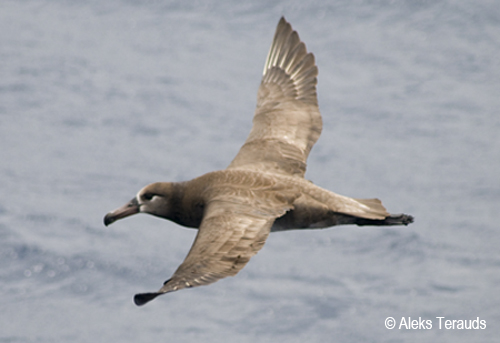Oikonos has been working to improve an understanding of North Pacific albatross ecology toward the effective conservation and stewardship of these highly migratory species.
Placing GPS (Global Positioning System) loggers on Black-footed Albatrosses Phoebastria nigripes on Kure Atoll in the North-western Hawaiian Island by the Kure Atoll Conservancy commenced recently towards this aim (click here).

The project addresses three priorities:
1. Enhance the understanding of Black-footed Albatross foraging and movement patterns, and overlap with longline fisheries and concentrations of marine debris across the North Pacific;
2. Participate in working groups to design and implement conservation strategies for the Black-footed Albatross; and
3. Encourage stewardship of ocean ecosystems through the participation of students in albatross tracking and pollution studies.
Because Black-footed Albatrosses range across management zones and jurisdictions, they are susceptible to broadly-distributed threats in national waters and the high-seas. Thus, international collaboration is critical. Satellite tracking provides an ideal large-scale perspective to assess how far-ranging albatrosses overlap with threats and management jurisdictions.
More information can be found on the Oikonos web site
John Cooper, ACAP Information Officer, 25 February 2012

 English
English  Français
Français  Español
Español